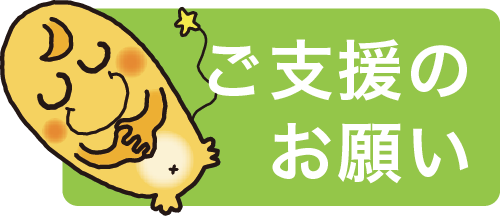![]()
 Dr. Hiroko SHIBANAI
Dr. Hiroko SHIBANAI
(Advisor, Japanese Animal Hospital Association / Director, Akasaka Animal Hospital)
![]()
The term ‘animal therapy’ has become well accepted in our society and is now heard in various contexts. There is much attention on the social, psychological, and functional benefits (physical and physiological) that animals have on humans and the demands for animal therapy in the fields of education, welfare and medical treatment are increasing.
JAHA (Japanese Animal Hospital Association) conducts CAPP (Companion Animal Partnership Program) activities as a public interest project to promote ‘animal therapies’. JAHA classifies these activities to three types, based upon their different objectives.
・AAA / Animal Assisted Activities
These activities are aimed to achieve emotional stability, recreational benefits and QOL improvements through interaction with animals. Most so-called ‘animal therapies’ in Japan are this type.
・AAT / Animal Assisted Therapy
This is a supplemental medical treatment involving animal intervention used in specialized human medical fields, conducted under the supervision of medical staff. The treatment is aimed to improve psychological, physical or social function and is designed to suit each patient. Appropriate animals and handlers are selected for the treatment course, and the results are evaluated.
・AAE / Animal Assisted Education
These activities are visits to educational facilities (schools etc) to teach children how to handle animals properly and teach the importance of ‘life’. The number of schools using this program as part of their ‘Life Studies’ or ‘General Studies’ classes is increasing.
During this workshop, volunteers and therapy dogs will demonstrate the above 3 types of JAHA’s CAPP activities. We hope that the audiences will understand our activity and will give us their best support after attending this workshop.
Giving Meaningful Experiences to Children
Dr. Mihoko NAKAGAWA
Committee on Supportive Activity for Raising Animals in School,Japan Veterinary Medical
Association / Director of Nakagawa Animal Hospital / Secretary-general,Society for Humane
& Science Education Utilizing School-owned Animals / Japanese Veterinary Council for
School-owned Animals
![]()
It has been said, in current times, that the difference between human and other animals is primarily based on the way the forehead part of our brains develop. This part is the foundation of our movements, and also rules our intelligence. In other words, our sense of ‘self’ (ego) resides in that part of the head. There is a true story from America about a normally gentle and warm hearted man who turned into a crude and boorish character as a result of a severe head trauma (an iron bar piercing his forehead).
Insufficient development within that part of the head hinders personality development. According to brain scientists, this part of the brain develops well if people have something to discover, pursue and enjoy. However, if an individual suffers continuous and intense stress, this area fails to develop properly. Such subjects tend to obsess on one thing and their behavior is often confused. This part of the brain develops in the time up to elementary school age but development beyond this period is not so easy. So it is often said, ‘if we are not serious in bringing up our children to protect them from society, we will have to protect society from our children.’
From this, the importance of early childhood education (for infants and lower elementary school children) is significant. Educationalists say that education also serves to nurture inspiration and deeper emotions in people. As such, education has a big aim ‘to nurture hearts that treasure and respect the lives of others, and to nurture motivation for solving problems with a zest to live’. This is necessary in the face of the multiple trials and tribulations in our lives.
There is also a concern about young people losing an interest in science. It is said that this is because children today have such little experience playing with animals or with any physical play. As a result they have inadequate ‘material’ in their heads for understanding science later on in their lives. So parents need to provide their children with an environment sufficient to help them develop an active interest for new things and for nurturing an enquiring mind. These are the well-springs of human life.
Educationists say ‘knowledge based on books and images, not on actual experiences, is a form of impoverishment’ and that ‘the more experiences children have, the better they will understand their textbooks later on’. They also say that, because we human beings are also a species of animal, experience with other animals is essential for children.
Yet, when a child asks if he/she can keep a pet, they are likely to be asked ‘but can you look after the animal properly? You can only have a pet when you are old enough to look after it well.’ As a result the child may never get to keep a pet at all and consequently never gain any understanding of other animals.
I hope more parents will keep pets in the child-raising environment, bringing up both simultaneously, a caring communication existing between all. If a child is so eager to have a pet, or begs and cries to have one, I encourage parents to get the pet and let your child be thankful to you. Animals have a direct communication with children, so they cannot be treated lightly. Getting a pet will result in a grateful child. Not getting one could trouble the child permanently. I ask that both children and parents care and protect a small life together.
Incidentally, current education guidelines in Japan (for kindergartens and elementary schools) obligate them to have animals and plants on the premises. In the case of keeping animals they do however need advice and support from a local veterinary association. Indeed, the Ministry of Education, Culture, Sports, Science and Technology states the need ‘to have support’ in their guidelines for elementary schools. So, today, there are some veterinary associations actively providing support and officially commissioned by their local authorities. Most local veterinary associations are now also moving in that direction.
Animal Therapy Demonstration
Dr. Hiroko SHIBANAI
(Advisor, Japanese Animal Hospital Association / Director, Akasaka Animal Hospital)
![]()
[Contents]
Even though many animal hospital staffs and the public are interested in seeing the actual animal therapy activities, you cannot easily find the activities in your neighborhood. In this session, our CAPP activity teams’ occupational therapists, physical therapists, volunteers and therapy dogs, will demonstrate the AAA, AAT, AAE activities.
1.Animal Assisted Activity (at homes for the aged / care facilities, etc.)
We will demonstrate the most common style of animal assisted activities.
2.Animal Assisted Therapy (at medical institutions)
An occupational therapist and a physical therapist, who are currently working with us in a hospital in Tokyo, will help us demonstrate the animal assisted therapy, which is actually being practiced at their hospital.
3.Animal Assisted Education (at elementary schools, etc)
We will demonstrate few examples of our AAE, ‘three things to promise’, ‘how to greet a dog’, ‘when you should not touch’ and ‘let’s be a tree’, with the participation of local elementary school students.

